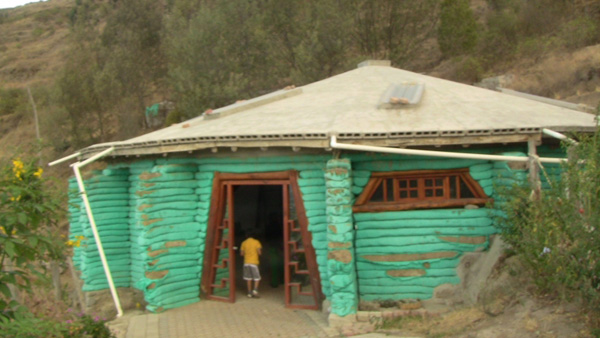
“Comuna Tola Chica is a community of about 64 families and a total of about 400 people, and is one of the most organized and active comunas in the country, also known as the ‘greenest’ of Ecuador.
The Comuna has existed for decades, but in 1944 formalized its legal entity guaranteeing autonomy inside of its 260 acres (180 were lost to the urban sprawl of Tumbaco before its legal establishment).
As a community, land ownership is communal, and decisions are taken by a democratic system, with an organizational council elected by the community to guide procedures.
Some responsibilities are fully shared: political decisions, water issues, large crop areas, a sports area, the community school, event center, trainings, and a tourism project (for the future). Other communal activities include two annual festivals and 12 mingas (collective work days) each year (at least 1 member of the family must participate or the family pays a fine).
The land is divided into three zones: 1) Management and training 2) Houses and small gardens 3) Field crops (organic) and reforestation – no construction permitted.
In addition to the organic farming, the community has 12 protected areas for reforestation of the native forest where 5 are fully reforested, and they are holding the vision to reforest 50 more acres in the future. The reforestation work is hugely important issue in a region that suffers a severe dry season, and needs trees to hold water in the ecosystem to supply the human, plant and animal communities.
In the training and education zone, a beautiful superadobe construction provides a space for workshops and events, alongside a small lake with fish, dry toilets (allowed in the city only because they have autonomy from building codes) and a nursery.”

Hi Owen,
While I appreciate your distribution of this information, as the person who wrote the original article you copied to your website, I would definitely appreciate a citation inside the article.
Thanks and take care –
Ryan Luckey
http://www.comuntierra.org
HI Ryan, We added a link to the source at the bottom of the blog post and put the text in quotes. Using short sections of text like this from other sources is standard and acceptable under Fair Use on the Internet. This is how we promote hundreds of projects such as yours to draw awareness to natural building. Take a while to look through previous blog posts and you’ll see what I mean.
This is nice. A place that thinks about it’s own survival using available resources, building smart and thinking/preparing for the future while governing it’s OWN self.
Yeah, and there are about 50 ecovillages to choose from. And that’s just one network. It looks like you could just drive down the Pacific Coastal Highway and check them out. And there are thousands of other ecovillages worldwide. My guess is a large percentage of them use sustainable natural materials. Just be careful to pick a country that will weather economic downturns and find one that speaks your language.
Global Ecovillage Network http://gen.ecovillage.org/
They have a map of 50 or so eco communities in Latin America. I wonder how many of them use earthbags? It could easily catch on since they have a history of building with earth/adobe.
http://www.comuntierra.org/site/mapa.php?id_idioma=2
Links to each project in Latin America: http://www.comuntierra.org/site/comunidades_e_projetos.php